Mad Hedge Technology Letter
January 2, 2019
Fiat Lux
Featured Trade:
(THE FANGS' PATH TO ONLINE BANKING),
(SQ), (V), (MA), (AXP), (JPM)

Mad Hedge Technology Letter
January 2, 2019
Fiat Lux
Featured Trade:
(THE FANGS' PATH TO ONLINE BANKING),
(SQ), (V), (MA), (AXP), (JPM)

Yu'e Bao or "leftover treasure" in English has caught the attention of more than 400 million Chinese investors.
This money market fund has exponentially grown into a $250 billion fund by the end of 2017, and is now the largest money market fund in the world!
This product isn't offered by Bank of China or another giant state-owned bank or financial enterprise, but Alibaba's (BABA) Ant Financial (gotta love those Chinese names).
Assets under management are up 100% YOY and it now accounts for a quarter of China's money-market mutual fund industry in just one fund.
These inflows coincide with the sudden migration into mobile payments. Common folks are comfortable with investing their life savings in these short-term instruments with a too-big-to-fail, larger-than-life firm such as Alibaba.
Yu'e Bao derives its funds from Alipay users, Alibaba's digital third-party platform, that allows consumers to pay for everything in life from theater tickets to utility bills.
Service is unified on a holistic graphic interface. Users can easily divert cash into this fund with a few screen taps on their app. Yu'e Bao's ROI offers a seven-day annualized yield of 4.02%, down from the introductory annualized rate of 6.9% around the launch in 2013.
Yu'e Bao's short-term yield outmuscles the 1.5% interest rate on one-year Chinese bank deposits and the 3.6% yield on 10-year Chinese government debt.
Weak banking regulation has spawned a mammoth FinTech (financial technology) industry in the Middle Kingdom. Only one yuan (16 cents) is enough to create an account and considerable retail flow has rushed in.
China has catapulted ahead of the rest of the world emerging as the leader of global FinTech innovation. The pace, sophistication, and scale of development of China's FinTech have surpassed the level in any other of the developed countries.
The country's digital metamorphosis has enhanced e-commerce, payment systems, and connected logistical services. The Chinese discretionary spender for the past decade has been the deepest and most reliable lever of global growth.
Mobile third-party payments in China, 90% cornered by Tencent's WeChat and Alibaba's Alipay, are estimated to reach a lofty $6 trillion in revenue by 2019, more than 50 times that of the U.S.
These omnipresent payment systems are now deeply embedded into the fabric of Chinese society. It's common to witness homeless people on Shanghai subways waving around a scannable image for WeChat or Alipay money transfers instead of asking for physical cash.
Even in rural farmlands, shabby convenience stores prioritize digital currency and sometimes don't accept paper currency at all. Yes, China is beating the U.S. to a cashless society.
Digitization is changing the competitive balance, and global banks must embrace large-scale disruption caused by big tech platforms.
Banks in China regard these companies as potential collaborators resulting in a net positive long-term infusion of enhanced products and services.
Agreements have been forged between the Bank of China and Tencent, and the China Construction Bank has linked up with Alibaba.
China has incorporated the technical power of A.I. (artificial intelligence) and machine learning into its FinTech platforms at every opportunity. Robo-advisors are also making inroads creating a bespoke financial program for the individual.
This trend has so far failed to go viral in America where individuals still prefer plastic cards or even paper cash. E-commerce clocked in a paltry 9.1% of total U.S. retail sales in the third quarter of 2017.
Even though most of us have our heads buried deep in our smartphone virtual world, Americans are still programmed to whip out debit or credit cards at every opportunity.
Chinese who visit America carp endlessly about America's archaic payment system.
Ultimately, American payment systems are ripe for digital disruption.
The American consumer will ultimately cause severe damage to MasterCard (MA), Visa (V), and American Express (AXP) which are happy with the current status quo.
The lack of innovation in the US FinTech sector is a failure in the otherwise fabulous technological leadership of the US. American smartphones should already be a fertile digital wallet, not just a niche market.
Savvy Jack Dorsey even invented a firm based on this inefficiency exploiting the lack of proficiency in domestic FinTech with Square (SQ).
And a vital reason the stock has gone parabolic this year is because of the brisk execution and the long runway ahead in this industry.
American big tech will gradually utilize China's FinTech model and extrapolate it with "American personality." It is much more of a two-way street now than before with cutting-edge ideas flowing both ways.
The next leg up after digital wallet penetration of FinTech is money market funds on tech platforms. In effect, the Chinese innovation of this industry has allowed more variations of potential financing for the ambitious Chinese, and the same trends will gradually appear on Yankee shores.
Ironically enough, Amazon's (AMZN) land grab strategy is more prevalent in China as artificially low financing and juicier scale justify this strategy.
The scaling premium also explains why corporate China's early adopter advantage is so effective because not many countries boast a 1.3-billion-person consumer market.
Soon, Americans will wake up to the reality that American FinTech must advance or foreign firms will rush in.
Mediocrity is not good enough.
iPhones and Android consumers could direct savings into tech money market funds with compounding yield all on a single digital platform.
Tech companies could deploy some of the repatriated cash to invest in some fledgling FinTech expertise to smoothly execute this new endeavor.
Consequently, a successfully created money market fund on a tech platform would enlarge the already substantial cash hoard these firms possess. Not only will the large tech companies flourish, but the big will get absolutely massive.
The determining factor is financial regulation. Capitol Hill has drawn a large swath of mighty Silicon Valley tech titans to testify because they are stepping on too many toes lately.
A scheme to hijack the digital payments market and dominate the mutual fund industry will cause unyielding push back in Washington especially when the Amazon death star continues pillaging select industries of their choosing and eliminating brick-and-mortar jobs by the millions.
J.P. Morgan (JPM) which has the largest institutional money market fund in the country and retail stalwarts such as BlackRock and Vanguard will be sweating profusely too if mega tech starts probing around its turf.
Alibaba is also coming for its bacon with the failed purchase of payment transfer service MoneyGram International (MGI) temporarily shutting out Jack Ma from a foothold in the American payment system industry.
And if the Chinese aren't let in, there will be others sniffing around for the bacon, too.
The momentum for these financial instruments is robust as FinTech integrates deeper into consumer life. The global cash glut from a decade of cheap financing is causing profit-hungry investors to starve for high-yield vehicles.
The stability and clean balance sheets of tech giants give them ample chance to successfully execute. So, why can't they also become banks? Would you buy an Apple, Amazon, or Google money market fund if they offered a 4% to 7% annualized yield?
I believe most Americans would.
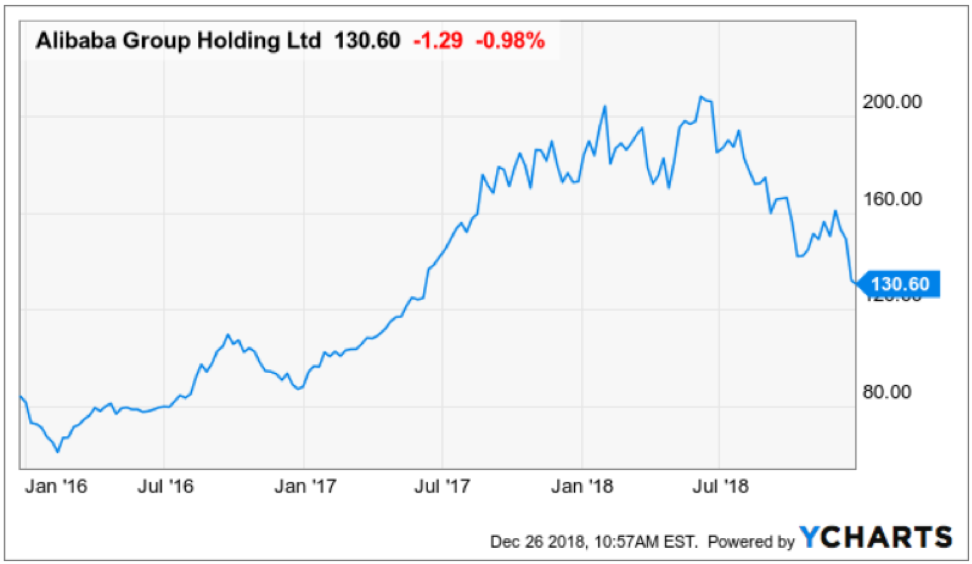
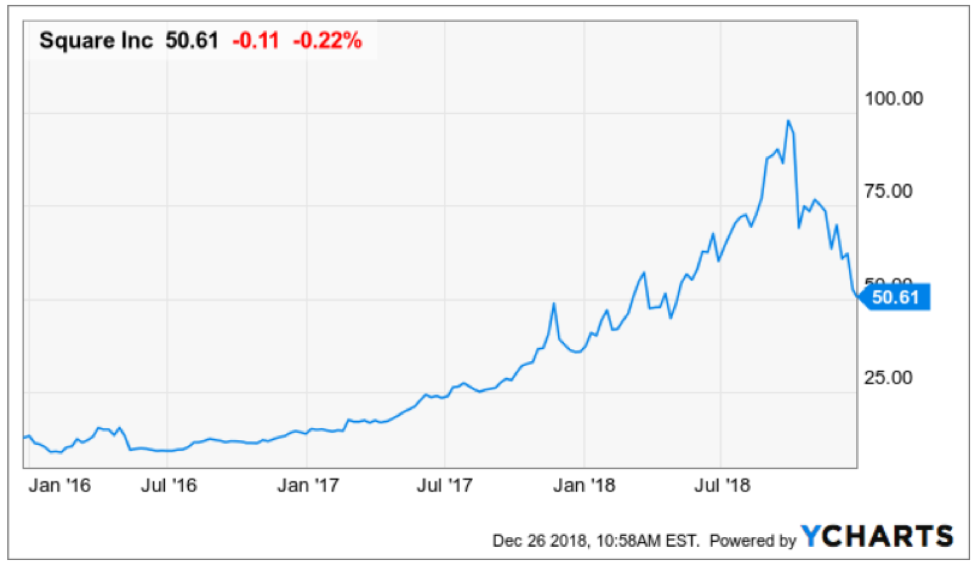
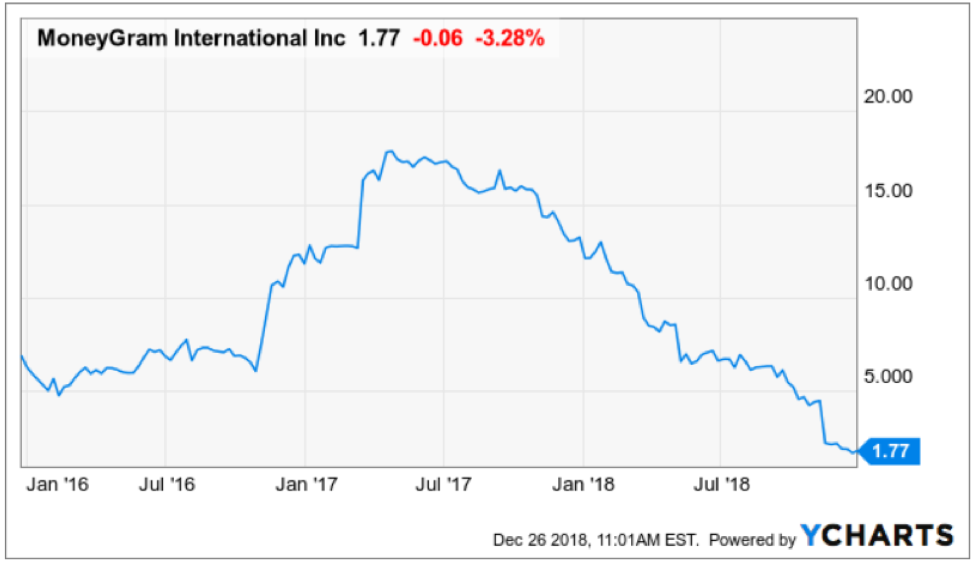

"If you're gonna make connections which are innovative... you have to not have the same bag of experiences as everyone else does," - said the former co-founder of Apple, Steve Jobs.

Suppose there was an exchange-traded fund that focused on the single most important technology trend in the world today.
You might think that I was smoking California's largest export (it's not grapes). But such a fund DOES exist.
The Global X Robotics & Artificial Intelligence ETF (BOTZ) drops a gilt-edged opportunity into investors' laps as a way to capture part of the growing movement behind automation.
The fund currently has an impressive $2.2 billion in assets under management.
The universal trend of preferring automation over human labor is mushrooming with each passing day. Suffice to say there is the unfortunate emotional element of sacking a human and the negative knock-on effect to the local community like in Detroit, Michigan.
But simply put, robots do a better job, don't complain, don't fall ill, don't join unions, or don't ask for pay rises. It's all very much a capitalist's dream come true.
Instead of dallying around in single stock symbols, now is the time to seize the moment and take advantage of the single seminal trend of our lifetime.
No, it's not online dating, gambling, or bitcoin, it's Artificial Intelligence.
Selecting individual stocks that are purely exposed to AI is a challenging endeavor. Companies need a way to generate returns to shareholders first and foremost, hence, most pure AI plays do not exist right now.
However, the Mad Hedge Fund Trader has found the most unadulterated AI play out there. A real diamond in the rough.
The best way to expose yourself to this AI trend is through Global X Robotics & Artificial Intelligence ETF (BOTZ).
This ETF tracks the price and yield performance of ten crucial companies that sit on the forefront of the AI and robotic development curve. It invests at least 80% of its total assets in the securities of the underlying index. The expense ratio is only 0.68%.
Another caveat is that the underlying companies are only derived from developed countries. Out of the 10 disclosed largest holdings, seven are from Japan, two are from Silicon Valley, and one, ABB Group, is a Swedish-Swiss multinational headquartered in Zurich, Switzerland.
Robotics and AI walk hand in hand, and robotics are entirely dependent on the germination prospects of AI. Without AI, robots are just a clunk of heavy metal.
Robots require a high level of AI to meld seamlessly into our workforce. The stronger the AI functions, the stronger the robot's ability, filtering down to the bottom line.
AI-embedded robots are especially prevalent in the defense industry, automobile manufacturing, and heavy industrial machinery. The industrial robot industry projects to reach $80 billion per year in sales by 2024 as more of the workforce gradually becomes automated.
The robotic industry has become so prominent in the automotive industry that they constitute greater than 50% of robot investments in America.
Let's get the ball rolling and familiarize readers of the Mad Hedge Technology Letter with the most influential weightings in the underlying ETF (BOTZ).
Nvidia (NVDA)
Nvidia Corporation is a company I often write about as their main business is producing GPU chips for the video game industry.
This Santa Clara, California based company is spearheading the next wave of AI advancement by focusing on autonomous vehicle technology and AI-integrated cloud data centers as their next cash cow.
All these new groundbreaking technologies require ample amounts of GPU chips. Consumers will eventually cohabitate with state of the art IOT products (internet of things), fueled by GPU chips, coming to mass market like the Apple Homepod.
The company is led by genius Jensen Huang, a Taiwanese-American who cut his teeth as a microprocessor designer at competitor Advanced Micro Devices (AMD).
Nvidia constitutes a hefty 6.60% of the BOTZ ETF.
To visit their website please click here.
Yaskawa Electric (Japan)
Yaskawa Electric is the world's largest manufacturer of AC Inverter Drives, Servo and Motion Control, and Robotics Automation Systems, headquartered in Kitakyushu, Japan.
It is a company I know well, having covered this former zaibatsu company as a budding young analyst in Japan 45 years ago.
Yaskawa has fully committed to improving global productivity through Automation. Yaskawa was recently switched out of the index in favor of an American newcomer John Bean Technologies specializing in the food processing and air transportation industries. Nevertheless, Yaskawa is still a company to have on your radar screen.
To visit Yaskawa's website, please click here.
Intuitive Surgical (ISRG)
Intuitive Surgical Inc (ISRG) trades on Nasdaq and is located in sun-drenched Sunnyvale, California.
This local firm designs, manufactures, and markets surgical systems and is industriously focused on the medical industry.
The company's da Vinci Surgical System converts the surgeon's hand movements into corresponding micro-movements of instruments positioned inside the patient.
The products include surgeon's consoles, patient-side carts, 3-D vision systems, da Vinci skills simulators, and da Vinci Xi integrated table motions.
This company comprises 7.71% of BOTZ. To visit their website, please click here.
Fanuc Corp. (Japan)
Fanuc was another one of the hit robotics companies I used to trade in during the 1970s and I have visited their main factory many times.
The 4thlargest portion in the (BOTZ) ETF at 6.11% is Fanuc Corp. This company provides automation products and computer numerical control systems, headquartered in Oshino, Yamanashi.
They were once a subsidiary of Fujitsu, which focused on the field of numerical control. The bulk of their business is done with American and Japanese automakers and electronics manufacturers.
They have snapped up 65% of the worldwide market in the computerized numerical device market (CNC). Fanuc has branch offices in 46 different countries.
To visit their company website, please click here.
Keyence Corp (Japan)
Keyence Corp is the leading supplier of automation sensors, vision systems, barcode readers, laser markers, measuring instruments, and digital microscopes.
They offer a full array of service support and closely work with customers to guarantee full functionality and operation of the equipment. Their technical staff and sales teams add value to the company by cooperating with its buyers.
They have been consistently ranked as the top 10 best companies in Japan and boast an eye-opening 50% operating margin.
They are headquartered in Osaka, Japan and make up 6.10% of the BOTZ ETF.
To visit their website please click here.
(BOTZ) does has some pros and cons. The best AI plays are either still private at the venture capital level taken over by the SoftBank Vision Fund wielding its war chest of $100 billion or a Silicon Valley mainstay such as Andreessen Horowitz.
You also need to have a pretty broad definition of AI to bring together enough companies to make up a decent ETF.
However, it does get you a cheap entry into many for the illiquid foreign names in this fund.
Automation is one of the reasons why this is turning into the deflationary century and I recommend all readers who don't own their own robotic led business, pick up some Global X Robotics & Artificial Intelligence ETF (BOTZ).
And by the way, the entry point right here on the charts is almost perfect.
To learn more about (BOTZ) please visit their website by clicking here.
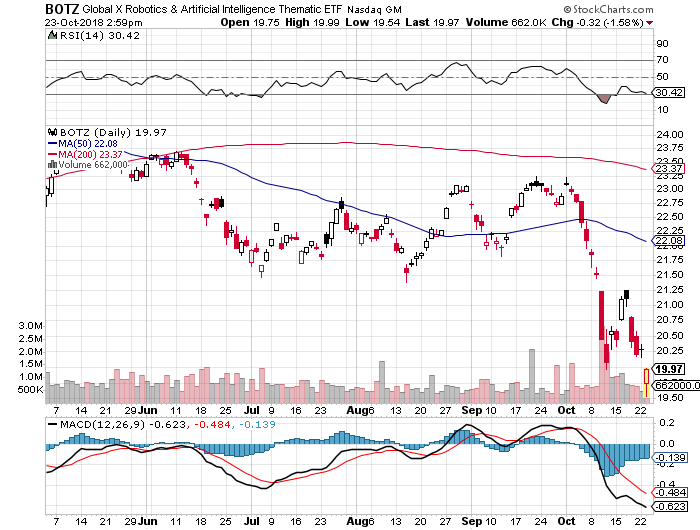
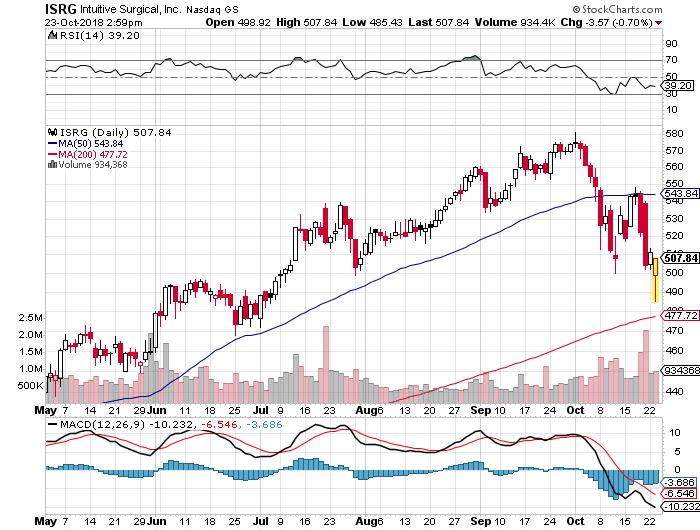
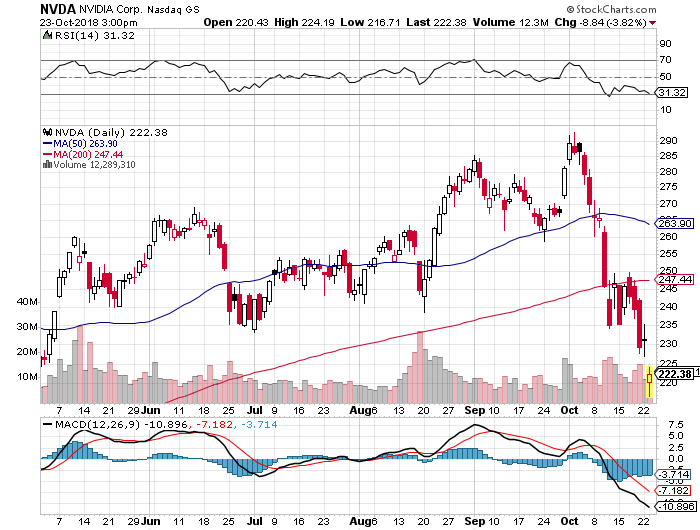
“I was born in Sweden, and in Sweden, we are known for the piracy services.” – Said Founder and CEO of Spotify Daniel Ek.
This is an excerpt. You do not have sufficient rights to view the full content.
“I was born in Sweden, and in Sweden, we are known for the piracy services.” – Said Founder and CEO of Spotify Daniel Ek.
This is an excerpt. You do not have sufficient rights to view the full content.
Given the ballistic growth of our business here at the Mad Hedge Fund Trader, you will soon be seeing some major improvements in the service.
You may have already noticed a substantial upgrade to our website. Further changes will be ongoing in the coming months promising better functionality and faster speeds. Some 10,000 pages of content is a lot to manage.
Mad Hedge Hot Tips started six weeks ago and have proven wildly successful. It enables us to have a more immediate and constant contact with our readers which has become crucial in this hyper accelerating fast forward world.
Our online customer support telephone number has changed. The new one is 347-480-1034. This is a high tech global online telephone number that operates 24 hours a day. If you can’t get through just leave a voicemail with the English lady with the posh accent. It will be transcribed instantly and emailed to us wherever we are.
Hey, what’s the point in publishing the Mad Hedge Technology Letter if you can’t use the new tech to spice up our own service?
Our mailing address has changed to a conveniently tax free domicile at:
John Thomas-Mad Hedge Fund Trader
Conifer Group LLC
PO Box 4470
Stateline, NV 89449
USA
If you want to mail me a bottle of The Glenlivet because you made so much money on you last Trade Alert, please feel free to do so.
Globalizing our production means there will be a slight delay in getting our daily content to you. Instead of 1:00 AM EST you should receive you letter by 9:00 AM EST, or 30 minutes before the New York Stock Exchange opens. Today is the exception.
Finally, it is with a heavy heart that I announce the retirement of Nancy at the end of the year, who has been diligently performing our customer support for the past six years. She is the one who has been instructing you on navigating the site, getting a new password, and dealing with the general ins and out of the Mad Hedge Fund Trader. I understand that a long cruise is in the offing.
Again, thanks for supporting our research and I look forward to meeting you at my next strategy luncheon or the Lake Tahoe conference in October.
John Thomas
CEO & Publisher
The Diary of a Mad Hedge Fund Trader

Mad Hedge Technology Letter
August 28, 2018
Fiat Lux
Featured Trade:
(SPOTIFY STILL HAS SOME UPSIDE),
(SPOT), (AMZN), (AAPL), (P)
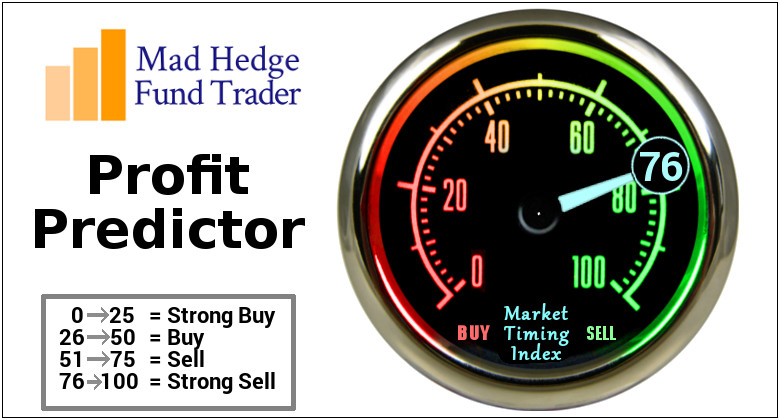
Investors sulking about Spotify’s (SPOT) inability to make money do not get the point.
Yes, the job of every company to be in the black, but the No. 1 responsibility for a modern tech company is to grow, and grow fast.
Tech investors pay for growth, period.
As investors have seen from Netflix, companies can always raise prices after seizing market share because of the stranglehold on eyeballs inside a walled garden.
That potent formula has been the bread and butter of powerful tech companies of late.
Spotify is a captive of the music industry, of which it is entirely dependent for its source of goods, in this case songs.
At the same time, the music industry has fought tooth and nail to destroy the likes of Spotify, which benefits immensely from distributing the content it creates.
History is littered with failed music streaming services outgunned in the courtroom. Pandora (P) is the biggest public name out there whose share price has tanked over the long haul.
The music industry will battle relentlessly to exterminate Spotify and force up the royalties these Internet giants must pay as their main input.
But that does not mean Spotify is a bad company or even a bad stock.
Every company has its share of pitfalls. Throw in the mix that Amazon (AMZN) and Apple (AAPL) have music streaming services that do not even need to make a profit, and you will understand why some might be wary about putting new money to work in music streaming business stocks.
The primary reason that Spotify shares will outperform for the foreseeable future is because it is the preeminent music streaming platform.
Also, there is favorable latitude to make way toward the goal of monetization, and ample space to improve gross margins.
Global streaming revenue growth has gone ballistic as the migration to mobile and cord cutting has exacerbated the monetization prospects of the music industry.
Streaming revenue was a shade under $2 billion in 2013, and continued to post a growth trajectory of more than 40% each year since.
As it stands now, total global streaming revenue registered just a tick under $7 billion per year in 2017, and that was an improvement of 41.1% from 2016.
There are no signs of yielding as more avid music fans push into the music streaming space.
Social media platforms have helped publicize popular artists’ content.
Music is effectively a strong part of youth culture, which will eventually see the youth integrate a music streaming app into their daily lives for the rest of their adult lives.
The choice among choices is Spotify in 2018.
The company was dogged by many years of famous artists removing their proprietary content from the platform citing unfavorable terms.
A prime example was in 2009 when Lady Gaga’s hit song “Poker Face” only received $167 in royalty payments from Spotify for the first million streams. This highlighted the rock-solid position Spotify has curated inside the music industry.
Individual artists’ fight against Spotify has been dead on arrival from the outset, but the benefits and exposure from cooperating with the company far outweigh the drawbacks.
Eventually, almost all artists have relented and reinstalled their music on Spotify. They depend on alternative moneymaking avenues to compensate for lack of royalties, which is mainly live music.
That is why it costs an arm and a leg to go see Taylor Swift in living flesh now, and why those summer festivals dotted around America such as Coachella command premium ticket prices.
How does Spotify make money?
It earns its crust of bread through paid subscriptions but lures in eyeballs using an ad-supported free version of its platform.
Naturally, the paid version is ad-less, and this subscription is around $5 to $15 per month.
In the second quarter, Spotify’s paid subscription volume surpassed 83 million, a sharp uptick of 40% YOY.
Ad-supported users came in at more than 101 million, even under the damage that General Data Protection Regulation (GDPR) did to western tech companies.
The ad-supported subscribers rose 23% YOY, and the paid version expects between 85 million to 88 million paid subscribers in the third quarter.
Many of the new paid subscribers are converts from its free model.
Spotify is poised to increase revenue between 20%-30% for the rest of the year.
The rise of Spotify's developing data division could extract an additional $580 million of revenue in 2023, making up 2% of total revenue.
Remember that Spotify’s reference price set by the New York Stock Exchange (NYSE) was $132 in April 2018. The parabolic move in the stock on the verge of eclipsing $200 undergirds the demand for high-quality tech companies.
When Spotify did go public, the robust price action was with conviction, making major investors - such as China’s Tencent, which possess a 9.1% stake and Tiger Global Management, which owns 7.2% - happy stakeholders.
In the last quarter’s earnings report, Spotify CFO Barry McCarthy reiterated the company’s goal to push gross margins from the mid-20% range to “gross margins in the 30% to 35% range.”
A jump in gross margins would go a long way in making Spotify appear more profitable, and that is the imminent goal right now.
The path to real profitability is still a long way down the road and small victories will offer short-term strength to the share price.
If Spotify can retrace to around the $185, that would serve as a perfect entry point into a stock that has given investors few chances in which to participate.
July and August have only offered meager entry points into this stock, one around the $180 level in August, and another around $170 in July.
Spotify enjoyed a great first day of being public after its unorthodox IPO ending the day at $149. The momentum has continued unabated while Spotify has posted all the growth targets investors come to expect from companies of this ilk.
Bask in the glow of the growth sweet spot Spotify finds itself in right now.
The long-term narrative of this stock is intact for a joyous ride upward, and only whispers of Amazon and Apple meaningfully attempting to monetize this segment could derail it.
For the time being, the music part of Amazon and Apple are just a side business. They have other priorities, such as Apple’s battle to avoid being exterminated from communist China, and Amazon’s integration of Whole Foods and new-fangled digital ad business.

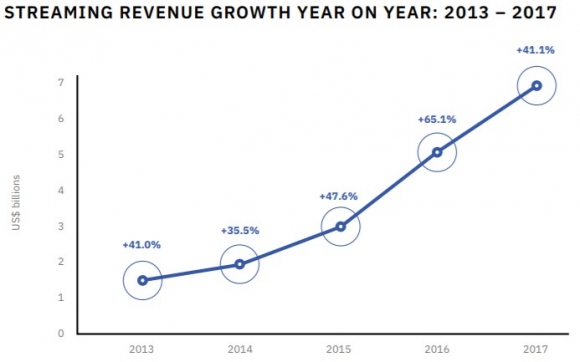

________________________________________________________________________________________________
Quote of the Day
“Ever since Napster, I’ve dreamt of building a product similar to Spotify,” – said cofounder and CEO of Spotify Daniel Ek.

Mad Hedge Technology Letter
August 27, 2018
Fiat Lux
Featured Trade:
(WHY ALIBABA IS THE FIRST STOCK TO BUY WITH THE OUTBREAK OF TRADE PEACE),
(BABA), (GOOGL), (AMZN), (YELP), (MSFT), (MU), (ZTE), (HUAWEI)
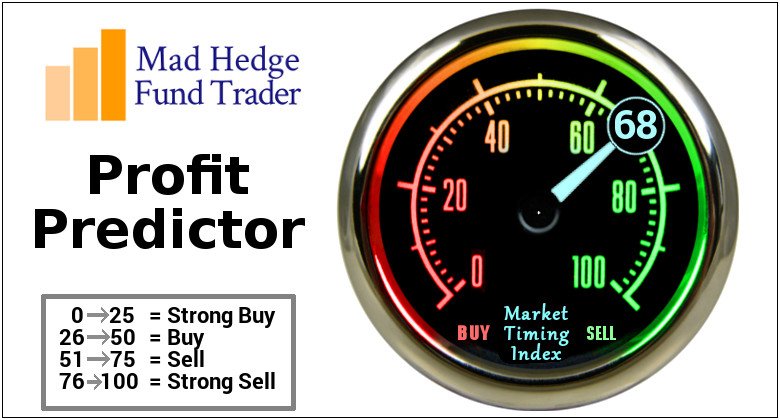
Legal Disclaimer
There is a very high degree of risk involved in trading. Past results are not indicative of future returns. MadHedgeFundTrader.com and all individuals affiliated with this site assume no responsibilities for your trading and investment results. The indicators, strategies, columns, articles and all other features are for educational purposes only and should not be construed as investment advice. Information for futures trading observations are obtained from sources believed to be reliable, but we do not warrant its completeness or accuracy, or warrant any results from the use of the information. Your use of the trading observations is entirely at your own risk and it is your sole responsibility to evaluate the accuracy, completeness and usefulness of the information. You must assess the risk of any trade with your broker and make your own independent decisions regarding any securities mentioned herein. Affiliates of MadHedgeFundTrader.com may have a position or effect transactions in the securities described herein (or options thereon) and/or otherwise employ trading strategies that may be consistent or inconsistent with the provided strategies.
This site uses cookies. By continuing to browse the site, you are agreeing to our use of cookies.
OKLearn moreWe may request cookies to be set on your device. We use cookies to let us know when you visit our websites, how you interact with us, to enrich your user experience, and to customize your relationship with our website.
Click on the different category headings to find out more. You can also change some of your preferences. Note that blocking some types of cookies may impact your experience on our websites and the services we are able to offer.
These cookies are strictly necessary to provide you with services available through our website and to use some of its features.
Because these cookies are strictly necessary to deliver the website, refuseing them will have impact how our site functions. You always can block or delete cookies by changing your browser settings and force blocking all cookies on this website. But this will always prompt you to accept/refuse cookies when revisiting our site.
We fully respect if you want to refuse cookies but to avoid asking you again and again kindly allow us to store a cookie for that. You are free to opt out any time or opt in for other cookies to get a better experience. If you refuse cookies we will remove all set cookies in our domain.
We provide you with a list of stored cookies on your computer in our domain so you can check what we stored. Due to security reasons we are not able to show or modify cookies from other domains. You can check these in your browser security settings.
These cookies collect information that is used either in aggregate form to help us understand how our website is being used or how effective our marketing campaigns are, or to help us customize our website and application for you in order to enhance your experience.
If you do not want that we track your visist to our site you can disable tracking in your browser here:
We also use different external services like Google Webfonts, Google Maps, and external Video providers. Since these providers may collect personal data like your IP address we allow you to block them here. Please be aware that this might heavily reduce the functionality and appearance of our site. Changes will take effect once you reload the page.
Google Webfont Settings:
Google Map Settings:
Vimeo and Youtube video embeds:
